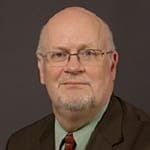![]() CxEnergy technical presentations will be approved for the following CEUs: AIA (LU), USGBC LEED General Education CE, CxA, EMP CE, and AABC (TBE & TBT) CE.
CxEnergy technical presentations will be approved for the following CEUs: AIA (LU), USGBC LEED General Education CE, CxA, EMP CE, and AABC (TBE & TBT) CE.


Case Study: New, Net-Zero Energy ASHRAE Headquarters
Ginger Scoggins, PE, CxA, FASHRAE, Engineered Designs, Inc.
Darren Draper, PE, CxA, LEED AP, Epsten Group
The new ASHRAE building, located in Technology Park in Peachtree Corners, is a 1970’s era 66,000 sq. ft. building that is being remodeled into a high-efficient, net-zero energy facility to become ASHRAE’s worldwide headquarters. During the course of the design of the project, the design and commissioning team encountered many envelope and system challenges involving the remodel of an older building and the effort to renovate it to meet the requirements of current ASHRAE 90.1 energy goals, as well as the challenge of designing to a stringent list of owner project requirements. This presentation will focus on those challenges and how they were addressed by the design and commissioning team in order to meet the project goals.
Learning Objective 1:
Through this case study the attendees will be able to understand the challenges associated with renovating an older building to achieve an aggressive energy target required by the building owner.
Learning Objective 2:
This presentation will provide attendees alike a greater understanding of the requirements of the new ASHRAE Net Zero Energy Design Guide for Office Buildings.
Learning Objective 3:
Attendees will be provided with information regarding the requirements of a building envelope to meet requirements of ASHRAE 90.1, Energy Standard for Buildings Except Low-Rise Residential Buildings.
Learning Objective 4:
This case study will review the inter-connectivity between the owner, design team and commissioning team in a lessons learned format for participant knowledge on future projects.

Fundamentals+ of Test, Adjust, & Balance for Engineers, Cx & Energy Providers
Jim Hall, PE, TBE, CxA, Systems Management & Balancing, Inc.
This practical, information-packed session explains many of the key test and balance challenges—from practical system design considerations, to the TAB Process, to obtaining meaningful and useful data—that if properly addressed in cooperation with an independent TAB firm can ensure that any project goes smoothly.
Learning Objective 1:
Understand the proper use, application, and limitations of the TAB instrumentation.
Learning Objective 2:
Understand what is accurate, useful and meaningful data that is obtained in the field vs. laboratory data for use on their project.
Learning Objective 3:
Gain an understanding of HVAC systems and the TAB/measurement process; how can systems be set up to allow for proper data collection.
Learning Objective 4:
Promote a project team approach to address schedule challenges, design alternatives as it relates to balancing device locations, equipment usage and HVAC system operation.



Remote Energy Management During COVID-19: Utilizing Benchmarking Tools to Target Cost Savings Opportunities
Eric Noller, PE, Energy Resources Integration, LLC
Carolyn Szum, Lawrence Berkeley National Laboratory
Ethan Clifford, Energy Resources Integration, LLC
Building and property managers are constantly evaluating various investments into their building and tenant modifications. These investments come with their own set of challenges such as capital, complexity of the retrofit, and available time to install due to tenant occupancy. It is common to use consultants or vendors to identify these potential upgrades which may be costly or have a bias approach to their evaluation. Lawrence Berkeley National Laboratory developed BETTER (Building Efficiency Targeting Tool for Energy Retrofits) to help building and property managers identify and estimate utility cost savings using a free building benchmarking tool. The tool utilizes minimal inputs to generate temperature dependent change point models which identify optimal operational and technological improvements. The results help customers make the most cost-effective energy efficiency investments and realize actual savings.
In comparison to other benchmarking tools such as Energy Star, the BETTER tool takes minutes to set up and identify energy saving opportunities without the need to hire a consultant. The presentation will discuss results obtained from the tool and how it has been leveraged for individual building benchmarking for site assessments. The Judicial Council of California (JCC) has piloted the tool along with Energy Resources Integration (ERI). JCC owner’s representative Yassen Roussev will join this presentation to discuss how the tool was utilized and the outcome. The presentation will provide an in-depth review of the BETTER tool’s user interface and output features. The presentation will demonstrate how simple the tool is to use to assess portfolios of buildings.
Learning Objective 1:
Understanding strategies during COVID-19 for performing remote data analytics.
Learning Objective 2:
How to leverage benchmarking tools for commercial building energy management.
Learning Objective 3:
How to quickly assess portfolios of buildings for targeting energy efficiency strategies.
Learning Objective 4:
Determining cost savings opportunities using readily available building information.

Cx of Fast Track COVID-19 Alternative Care Facility (ACF)
Ryan McClain, PE, CxA, CEM, CMVP, LEED AP, Pinnacle Energy Services, Inc.
Early 2020 computer pandemic models projected exponential COVID-19 case growth triggering an emergency need for isolation rooms to meet the anticipated demand. Along with other similar projects, federal funding was established to create 116 COVID-19 isolation spaces in a 13-day window with the directive that spaces meet NFPA 99, Category 2 “plus” criteria but that otherwise, did not have to satisfy other typical code requirements for licensed beds under certain emergency provisions afforded by law established through the U.S. Dept. of Health & Human Services. The US Army Corps of Engineers, was tasked with managing the project and, after surveying numerous sites, identified 85ksf of space within The Oklahoma State University Hospital in Tulsa for the implementation. The designated area was composed of old inpatient care rooms that had “re-permited” as office occupancy in recent times and the older infrastructure not only fell short of current codes but had suffered system performance “drift” over time as well.
This all created a unique Cx scenario where project stakeholders had to navigate safety, cost, technical feasibility and professional liability hurdles all under the intense pressure of a 13-day turn-key schedule hard stopped by a liquidated damages clause. The case study addresses the unique considerations of how to approach delivering best-practice Cx services in the context of a fast-track, large-scale, federally-managed COVID-19 project amidst the intriguing scenario where even typical code-required provisions are being negotiated in near-real-time.
Learning Objective 1:
Learn techniques for delivering Cx services on fast-track projects.
Learning Objective 2:
Learn how to manage risk on projects on mission-critical applications involving trade-offs between life-safety, cost, schedule and technical feasibility.
Learning Objective 3:
Learn how to defend best-practice Cx norms and standards even when projects go far “off-script”.
Learning Objective 4:
Learn techniques for negotiating and managing the Cx of existing systems that interface with new infrastructure.


Technology Engineering Cx (TECx): Why this is a necessity.
Randy Gruberman, PE, RCDD, CxA, Fitzemeyer & Tocci, Associates, Inc.
Kagan Longval, BECxP CxABE, Fitzemeyer & Tocci, Associates, Inc.
Building Technology systems are not only networks and WiFi, they also include life safety and security. Your building owners are often getting involved with the design/delivery of Technology systems and construction processes for the first time, and general contractors often do not have qualified staff to handle complex systems oversight and commissioning. Technology Cx providers can help guide the systems to successful completion and desired maintainable outcomes. Operations of technology systems can include the security for all of a building’s occupants. Technology commissioning is essential to reduce schedule slips, change orders, and operating costs and to free up owner staff to concentrate on the mission along with the maintenance.
Learning Objective 1:
Discuss technology commissioning as a design and construction service.
Learning Objective 2:
Show that properly designed, and installed systems can save energy and operating budgets.
Learning Objective 3:
Discuss resources (people and tools) and the lack thereof in our industry.
Learning Objective 4:
Join in discussion with the audience about technology commissioning.

VFD Motors: Shaft Voltage Causes and Effects and Solutions
Tom Hedrick, PE, CxA, EMP, LEED AP, International Commissioning Engineers
Presentation will focus on the shaft voltage that is induced via Variable Frequency Drives, the main causes of the induced voltages, magnitude of the problems and possible solutions to this issue that reduces the life expectancy for VFD motors. Presentation is supported by peer reviewed research, field testing and performance based solutions. Included in the presentation will be case study measurements, documentation and analysis. Audience will walk away with information on how to prevent damaging shaft voltage on bearings and motor in order to reduce maintenance issues and capital cost expenditures.
Learning Objective 1:
Identify causes of damaging shaft voltage in VFD motor applications
Learning Objective 2:
Identify Methods to Measure Shaft Voltage in the field
Learning Objective 3:
Identify possible solutions to mitigate shaft voltage and extend expected life of VFD motors
Learning Objective 4:
Determine proper language to include in Design Standards / Specifications for future projects


Push & Pull: Successfully Commissioning IPD Projects
Joe Crowe, PE, CxA, LEED AP, Gresham Smith
Johnathan Woodside, PE, CxA, LEED AP, CEM, Gresham Smith
Integrated project delivery (IPD) has gained popularity in recent years, thanks to the method’s ability to efficiently involve all project team members very early in the design process, extending through construction and to facility turnover. However, as IPD teams work concurrently towards continuous deliverable dates for smaller, permissible packages, commissioning team members struggle to review and verify that all systems are planned, designed, installed, tested and operated to meet the Owner’s Project Requirements due to the evolving scope as the design changes.
During this presentation, speakers will share lessons learned while working on IPD projects as the commissioning scope and involvement constantly evolves. They will also highlight best practices for successful IPD project involvement, from pull planning to coordinate deliverables, proactively pinpointing pre-functional checklists functional performance tests, and enlisting the help of a third-party commissioning agent.
Learning Objective 1:
Participants will understand the commissioning process and how it integrates with the overall project life cycle.
Learning Objective 2:
Participants will understand how IPD and commissioning can work together.
Learning Objective 3:
Participants will learn how to analyze gaps in the project delivery process that can affect commissioning value.
Learning Objective 4:
Participants will learn strategies to overcome common commissioning roadblocks on IPD projects.

Sharp Santee Microgrid Case Study – “Microgrid, Macrogains”
Alex Mathers, PE, CxA, GMC Cx
Owner’s Representative (Tentative)
Sharp HealthCare is San Diego County’s leading health care provider. Sharp is focused on delivering the highest quality patient-centered care, the latest medical technology and superior service. They have more than 2,700 affiliated physicians and 18,000 employees working within four acute-care hospitals, three specialty hospitals, three affiliated medical groups and a full spectrum of other facilities and services. Sharp Rees-Stealy Santee Medical Center is a new 86,000 SF facility consolidating multiple medical specialties into one destination for the residents of a lower income and underdeveloped community in east San Diego County. It offers primary and specialty care, urgent care, pharmacy, laboratory, mammography, optical shop, radiology, rehabilitation services, and diabetes and nutrition education. As part of Sharp Healthcare’s continued dedication to sustainable practices, the new project includes a power microgrid that will allow Sharp Rees-Stealy to generate solar power and save approximately $300,000 a year in electricity charges.
This presentation would focus on :
-
- The operational benefit of microgrids
- The commissioning issues found/identified/fixed
- The lessons learned
- The recommendations for improvement
- How microgrids apply to different project types

Proving the Business Case for Building Analytics
Eliot Crowe, Lawrence Berkeley National Laboratory
As building energy and system-level monitoring becomes more common, facilities teams are faced with an overwhelming amount of data. These data do not typically lead to insights or corrective actions unless they are stored, organized, analyzed, and prioritized in automated ways. With analytic software applied to everyday building operations, owners are using data to their advantage and realizing cost savings through improved energy management.
The 2016–2020 Smart Energy Analytics Campaign was a public–private-sector partnership program focused on supporting commercially available Energy Management and Information Systems (EMIS) and monitoring-based commissioning (MBCx) practices for commercial buildings.
This session will outline how building operators in the Campaign were encouraged to share information on their energy usage and cost savings and how that data was analyzed into a report from Lawrence Berkeley National Lab. After four years in operation, the Campaign included 104 commercial organizations, totaling 567 million square feet of gross floor area and more than 6,500 buildings, making this the most comprehensive dataset available on analytics installation and use.
Learning Objective 1:
Understand the cost and energy savings related to Energy Management and Information Systems.
Learning Objective 2:
Recognize the differences and similarities of the tools and technologies in the EMIS family.
Learning Objective 3:
Understand the barriers and enablers to implementation of EMIS in real-world applications.
Learning Objective 4:
Learn about the current research landscape on the future direction of EMIS.

Practical Aspects of Hyperscale Data Center Commissioning
David Yancosky, Mortenson Construction
Covid-19 has added momentum to the already expanding need for data centers as more work is performed remotely. To meet the construction demands, with accelerated timelines, the commissioning industry is naturally challenged. Peripheral to the staffing/mobilization concerns, traditional Cx program challenges are compounded by new customer requirements associated with Covid-19 concerns.
This presentation will first outline the typical Data Center customer and the “text-book” approach. From there, the practical realities will be discussed.
Some of those are:
1. Strategies/methods to commission remotely.
2. New customer operational needs, e.g. those that relate to minimal onsite operators due to not just Covid, but with contemporary staffing challenges.
3. New quality control challenges associated with leaning out of construction resources.
Learning Objective 1:
Understand the mission critical aspects of data center market.
Learning Objective 2:
Relate textbook commissioning to practical data center commissioning programming.
Learning Objective 3:
Related construction quality concerns to the overall commissioning deliverable
Learning Objective 4:
Understand the specialized programming, the special touch, that is required for success in hyperscale data center commissioning.

High Accuracy, Low Cost Building Ventilation Verification Tool
Caton Mande, UC Davis Western Cooling Efficiency Center
The ventilation rate is an essential parameter that affects the indoor air quality and energy consumption of buildings. Inadequate ventilation is a common problem in existing buildings that may affect the health and productivity of occupants. Furthermore, occupants of under-ventilated buildings are largely unaware of the problem. Current tools and methods for commissioning and measuring building ventilation rates are not a cost-effective way to identify problem areas in existing building ventilation systems because they are time and labor intensive. Thus, it can be challenging to effectively prioritize areas that require more intensive testing or recommissioning.
The UC Davis Western Cooling Efficiency Center, with funding from the Office of Naval Research, is developing a high accuracy, low cost ventilation verification tool that measures the carbon dioxide decay rate building-wide on a per-zone level and automatically calculates the current air exchange rate. The tool has been tested in a multi-zone office building and the results were within 5% of tests performed using traditional testing and balancing methods.
In addition to directly measuring the building air exchange rate per zone, this tool will enable building managers or occupants to quickly identify problem areas in existing buildings or verify measurements performed by testing and balancing professionals. These additional benefits could provide building managers and occupants with more quantitative data to support efforts to reduce the risk of airborne transmission of COVID-19 in buildings.
Learning Objective 1:
People are not good indoor air quality sensors.
Learning Objective 2:
Operating priciple for various air measurement tools.
Learning Objective 3:
How carbon dioxide decay can be used to measure the zone air exchange rate.
Learning Objective 4:
How this tool could be used by building managers or occupants to improve indoor air quality.


Codes, Standards, Ordinances and Guidelines – Which Rule?
Jim Magee, CxA, EMP, Facility Commissioning Group
Bob Knoedler, PE, CxA, EMP, Hanson Professional Services, Inc
As commissioning continues to be addressed in more codes, standards, guidelines and sustainability programs, (all updated on periodic schedules), Cx Providers need to be aware of the associated tasks, documentation and deliverables required by same within the sectors and jurisdictions they practice.
Several organizations have created their own guides and requirements for commissioning, including: ASHRAE, ASHE (for Health Facilities), General Services Administration (GSA), Veterans Administration (VA), and the Department of Defense (Unified Facilities Criteria). Recognizing the impact commissioning has on the performance of energy-using systems, many energy codes and standards have incorporated Cx requirements into their requirements, including the International Energy Conservation Code and ASHRAE 90.1. Sustainability programs, like LEED and Green Globes, also require commissioning, recognizing its importance in environmental stewardship and energy efficiency.
State codes and local jurisdictions have various schedules for code review and adoption; often resulting in different versions of a given code currently active, often with amendments. This session will review some of the differing Cx requirements currently incorporated (or adopted by reference) within current codes and standards, and some of the efforts by Cx organizations toward reconciling / standardizing these requirements.
Learning Objective 1:
Be aware of the general tasks, documentations, and deliverables required by codes, standards, guidelines and sustainability programs.
Learning Objective 2:
Learn which energy codes and standards have incorporated Cx requirements into their requirements.
Learning Objective 3:
Recognize and understand the impact commissioning has on the performance of energy-using systems.
Learning Objective 4:
Understand how some of the Cx requirements currently incorporated within current codes and standards differ.

Progress vs Perfection – Developing the Best Building Envelope Commissioning program
Stevan Vinci, CET, LEED Fellow, CxA+BE, BECxP, Morrison Hershfield Corporation
Jeff Wrigley, State of Utah
Rick Ziegler, PE, RRC, Morrison Hershfield Corporation
Currently across the industry and various owner groups there is a wide range of scope and technical expertise within the Building Envelope Commissioning (BECx) practice. Ineffective programs may not only fail to meet the owner’s performance requirements, but can be detrimental to the industry for perceived lack of value. While there are applicable BECx standards available, they are either watered down or improperly applied to projects. It is critical that the BECx process effectively verifies the project goals with clear value to the owner. The State of Utah is considered a leader among owner groups for implementing stringent building performance requirements and advanced BECx techniques with hundreds of buildings completed that have met the mandated project performance requirements. Steve, Rick, and Jeff will provide insight into the steps taken in developing the program and focus on Utah’s BECx process and technical approach to providing significant value to project teams that has demonstrated operational cost savings by up to 40%. The presentation will conclude with a project case study demonstrating the effectiveness of the BECx program.
Learning Objective 1:
Learn how to apply highly successful concepts from the State of Utah’s program to other institutions or projects.
Learning Objective 2:
Understand the history and analysis used to identify and standardize owner’s project requirements.
Learning Objective 3:
Understand key technical considerations to meet building envelope performance goals.
Learning Objective 4:
Identify air leakage and thermal performance goals for the building enclosure and the process to understand the impact on total building energy usage.

Automation Technology for Effective Building Water Management

Historically, premise plumbing systems have been designed, installed, and operated without the ability to quickly and easily monitor their operation making effective building water management time consuming and difficult. In this presentation, we review the impact of common building water issues, principles of effective water management, and how emerging automation technology supports key water management objectives, including fundamental legionella control strategies, improved user experience, and plumbing system optimization.
Learning Objective 1:
List common building water issues impacting water safety and efficiency.
Learning Objective 2:
Explain key water management principles for minimizing risk associated with premise plumbing.
Learning Objective 3:
Identify emerging technology available to support effective building water management.
Learning Objective 4:
Describe how emerging technology supports key water management objectives: user satisfaction, water and energy optimization, and drinking water hygiene.

Guideline 3rd Edition: Understanding Emergency Power System Commissioning

Learning Objective 1:
Definitions relating to the commissioning of EPS and EPSS.
Learning Objective 2:
Differentiate emergency power system commissioning expectations with respective phases of construction.
Learning Objective 3:
EPSS Sequence of Operation (SOO).
Learning Objective 4:
Integrated System Testing (IST).

An Owner’s Perspective of Retro-Commissioning
G. John Schaub III, PE, USAG-Rock Island Arsenal
Doug Van Werden, CEM, Rock Island Arsenal
From an Owner’s perspective, the Commissioning Process can take on multiple levels of investigation to confirm that a project meets the intended design. In some cases, the commissioning process is a simple installation checklist. In other instances, the commissioning process looks at the entire system operation. Unfortunately, the low bid by necessity typically provides the minimal service. In many cases, the Project Specifications do not provide adequate guidance. Does that level of performance meet with the Owner’s expectations? Should we be satisfied with that level of performance? Retro-Commissioning is a detailed, in depth review, of not only the system operation but also the building operation as a whole. Have the needs of the space changed since the system was put into place? Have those changes adversely affected the operation of the systems? What opportunities exist for reducing energy usage and the associated costs? Can user comfort conditions be improved? What can we expect to find?
This presentation is a review of the recent Retro-Commissioning program that was completed for one of the Buildings at the Rock Island Arsenal. This program was a real-world extension of the Retro-Commissioning Class offered by the Corps of Engineers. This review included an in-depth review of not only equipment installation requirements, but also included a review of the original design and system programming. Data collection was included for verification of system operation and performance. Although this project focused on the HVAC systems, the lesson learned can be extended to plumbing and electrical systems.
Learning Objective 1:
Why Retro-Commissioning?
Learning Objective 2:
Defining the requirements
Learning Objective 3:
What can you expect to find?
Learning Objective 4:
What needs to be done to mitigate the problems and issues encountered during the original project construction?


Commissioning Integrated Low Voltage Systems in Healthcare

Kevin O’Brien, CxA, RTPM, SSRCx
Healthcare low voltage systems are increasingly complex, requiring levels of cross-system integration that can prove difficult to verify in the field. Modern Fire Alarm, Access Control, Nurse Call and Infant Abduction systems often communicate and cooperate to protect patients and Owners alike. A Commissioning Authority‘s understanding of these systems and how they interact can often make (or break) a successful low voltage Commissioning Plan, and can be the difference between an exceptional Client relationship and simply a good one.
Learning Objective 1:
To understand common basic system configurations and typical testing protocols for low voltage systems.
Learning Objective 2:
To advocate for the Client’s needs and unique considerations during commissioning of low voltage systems.
Learning Objective 3:
To understand common coordination difficulties that are unique to commissioning multiple integrated systems.
Learning Objective 4:
To become familiar with common low voltage system issues and strategies to mitigate their effect on the commissioning process.

Operating with Persistence
Brent Grimm, PMP, ETC Group
This presentation explores the application of HVAC Analytics on energy efficiency projects, which previously would have been at risk for persistence. Equipment and its operation will degrade over time without a cost-effective means of monitoring and a staff structure to make improvements and help good performance persist. Using data, rolled up to key performance indicators (kpis), to monitor performance allows staff to easily assure systems are not drifting out of optimal performance. Analytics serves another viable role for an organization by informing design of new systems and equipment replacements. And finally, analytics readily support Environmental Health and Safety requirements; another critical aspect of building performance. We will talk about how owners are thinking about and responding to known barriers, including lessons learned, and steps being taken to address them.
Learning Objective 1:
Structure an organization in a way that benefits from HVAC analytics software and monitoring-based commissioning services. Being flexible as these services evolve.
Learning Objective 2:
Use analytics software and MBCx services to: a. Support Environmental Health and Safety (EHS) efforts. b. Focus manpower efforts to improve occupant comfort. c. Reduce operating costs. d. Improve equipment reliability.
Learning Objective 3:
Identify operational needs (resources, funding) to respond to findings of monitoring based commissioning
Learning Objective 4:
Discuss best practices in leveraging MBCx services with modern data analytics software to address compliance and occupant comfort.

Commissioning, Operations and Maintenance – A Beautiful Relationship?
Michael Talbot, PE, CxA, FASHRAE, LEED AP, Apogee Consulting Group
A successful commissioning/retro commissioning process ensures not only that a building operates as the Owner intended but the building staff are prepared to operate and maintain the systems and equipment as intended. This process can ONLY be successful with proper input from the O&M staff. The root cause of why buildings do not function as intended can be traced to miscommunication or non-communication with the O&M staff prior too or during the commissioning process. The power point presentation will describe how to go through an O&M assessment during the commissioning process to achieve a “Quality” operation and maintenance program. It will also describe how commissioning and retro commissioning establish the performance objectives for the O&M staff.
Learning Objective 1:
Understand the differences between building maintenance and commissioning.
Learning Objective 2:
How to maintain building performance after the commissioning process has ended.
Learning Objective 3:
Understand the important roles that the O and M staff have during the commissioning process.
Learning Objective 4:
Review the O and M “best practices” for energy efficient buildings.


Put the Owner Back into the OPR: How LEED has led the OPR astray
Tom Paladino, PE, LEED AP, Paladino and Company
Brad Greeff, LEED BD+C, CEM, CCP, Paladino and Company
As its name suggests, the Owner Project Requirements (OPR) is the designated channel for the voice of the owner. But if you look at most OPRs for sustainable buildings, the owner’s goals are rarely addressed – the OPR simply dictates to the owner what is required to achieve LEED certification. This reality is contrary to the spirit in which LEED commissioning was created.
The OPR forms the basis from which all design, construction, acceptance, and operational decisions are made – and for the document to deliver meaningful business value the Owner must be put back into the author’s seat when identifying project requirements.
This session will present an objective approach to aligning owner needs with a decision support structure and third-party validation whether it’s LEED, LBC, WELL or others. The approaches reviewed in this session will benefit owners and Cx teams, providing skills advancement and examples of good, better, and best OPRs.
Learning Objective 1:
(Re)define the purpose of an OPR.
Learning Objective 2:
Identify good, better, and best approaches to drafting OPRs.
Learning Objective 3:
Understand how the Cx agent can deliver greater value to the ownership.
Learning Objective 4:
Identify techniques to link owner values to Cx practices.


Evolving Commissioning Requirements in Building Energy Codes
Scott West, PE, PMP, LEED AP, ASHRAE BCxP, BEAP, BEMP, HFA
Greg Schluterman PE, CxA, LEED AP, ASHRAE BEAP & BEMP, HFA
This session will cover the evolving nature of commissioning requirements within the US energy codes. ASHRAE Standard 90.1 and the International Energy Conservation Code each take a different approach to commissioning requirements. Different project types will take different compliance approaches depending on the prevailing code year, but why? We’ll examine some of the project scenarios that result in different compliance requirements between the two codes and how commissioning is impacted.
To add to the mix, beyond-code programs such as the LEED rating system and International Green Construction Code also take different approaches to commissioning. How do commissioning practitioners make sure project scopes match jurisdictional requirements as well as owner expectations? Are there any major scope items that are falling through the cracks? We’ll address these questions and draw comparisons to help sift through the mire.
As a reminder, technical sessions are for the education of our members and other attendees. All presentations must be educational in nature and avoid marketing, sales or other promotional content.
Learning Objective 1:
Learn how commissioning requirements in the energy codes have evolved over the years.
Learning Objective 2:
Learn how ASHRAE 90.1 and IECC commissioning requirements overlap and differ.
Learning Objective 3:
Learn how base energy code commissioning requirements compare with beyond-code requirements.
Learning Objective 4:
Learn what commissioning practitioners need to know about code-mandated commissioning to ensure overall project success.


Establishing Industry Qualifications & Standards for Building Enclosure Commissioning Providers
John Runkle, PE, Intertek
Alec Jeffries International Institute of Building Enclosure Consultants
The International Institute of Building Enclosure Consultants (IIBEC) has developed and launched a new ANSI ISO 17024 accredited certification for building enclosure commissioning (BECx) providers with clear qualifications and a rigorous application and examination process.
This session will review the Certified Building Enclosure Commissioning Provider (CBECxP®) program, highlight available training modules, and review evolving building enclosure commission trends and standards throughout the industry.
Learning Objective 1:
A brief overview of BECx history, training, and standards.
Learning Objective 2:
Review the comprehensive application, qualification, and criteria for obtaining the new CBECxP credential.
Learning Objective 3:
Analysis of industry trends and professional growth opportunities relating to building enclosure commissioning.

Fire & Life Safety Systems Commissioning Essentials
David LeBlanc, PE, FSFPE, Jensen Hughes
The 2021 Edition of NFPA3, Standard for Commissioning Fire Protection and Life Safety Systems, provides the process, methods, and documents for commissioning fire protection and life safety systems. The speaker focuses on the difference between, and implementation of NFPA3 and the new NFPA 4 Standard, Integrated Testing of Fire Protection and Life Safety Systems: who’s involved, how this new process interfaces with commissioning providers, and the steps in the commissioning process as it relates to fire protection and life safety systems. Learn about the fire safety roles of the Fire Commissioning Agent (FCxA), and the new Integrated Testing Agent (ITa) who is responsible for review, documentation, and testing the needed integration/ interfacing between fire protection and life safety systems across various systems. What are their qualifications and responsibilities, and how do they fit in into an overall full building commissioning team?
The speaker discusses common misconceptions, misunderstanding, and standardized terminology of commissioning fire protection and life safety systems, and reviews EBCx subsets – re-commissioning (ReCx) and retro-commissioning (RCx) – and how they may differ from new construction commissioning.
Learning Objective 1:
Describe the unique challenges with Commissioning Fire Protection and Life Safety Systems.
Learning Objective 2:
Articulate the NFPA 3 commissioning process for Fire Protection and Life Safety Systems.
Learning Objective 3:
Define the role of the Fire Commissioning provider and how they integrate with the full commissioning team.
Learning Objective 4:
Differentiate between Cx NFPA 3 and Integrated Testing NFPA 4 of Fire Protection and Life Safety Systems.

Innovative Waterside Economizer “Guaranteed Cooling with Chiller and Cooling Tower OFF”
Ahmed Hassani, CEM, UC Berkeley
Can we have a free water cooling without a chiller or cooling tower waterside economizer with almost zero-dollar implementation cost? Yes, we can! With an innovative methodology and a simple control strategy or manipulation of your existing chilled water loop, you can realize free water cooling without a chiller or cooling tower waterside economizer. The methodology or control strategy targets any chilled water system that serves a mixture of 24/7 operation critical weather dependent and weather independent systems. It will allow the chilled water loop to provide the necessary cooling for the critical weather independent loads without running the chiller or the cooling tower on waterside economizer mode. This methodology will allow you to save the energy that would be required to run the chiller, the cooling tower and its condenser water pumps. It will also result in some heat recovery in the process as another plus of energy savings.
This presentation will walk you in detail to define the specific characteristics of the building systems that are required to apply this chilled water loop control strategy. I will also present a case study results that shows how effective this methodology is and how the systems that require cooling are satisfied. This chilled water loop control new strategy or methodology works and it is a proven way to save energy with a simple and almost free implementation.
Learning Objective 1:
Learn about other presenters innovative ideas and techniques to save energy.
Learning Objective 2:
Learn about the latest technologies to control buildings.
Learning Objective 3:
learn about the latest techniques of testing and balancing.
Learning Objective 4:
Learn about the occupancy wellness new code and requirements.



 CxA certification is open to independent industry professionals who meet all education and experience prerequisites and implement commissioning processes in new and existing buildings.
CxA certification is open to independent industry professionals who meet all education and experience prerequisites and implement commissioning processes in new and existing buildings. The Energy Management Process Seminar is designed to help candidates understand the energy management process and how it can be applied and serves as the final preparation for the Energy Management Professional (EMP) exam.
The Energy Management Process Seminar is designed to help candidates understand the energy management process and how it can be applied and serves as the final preparation for the Energy Management Professional (EMP) exam.













